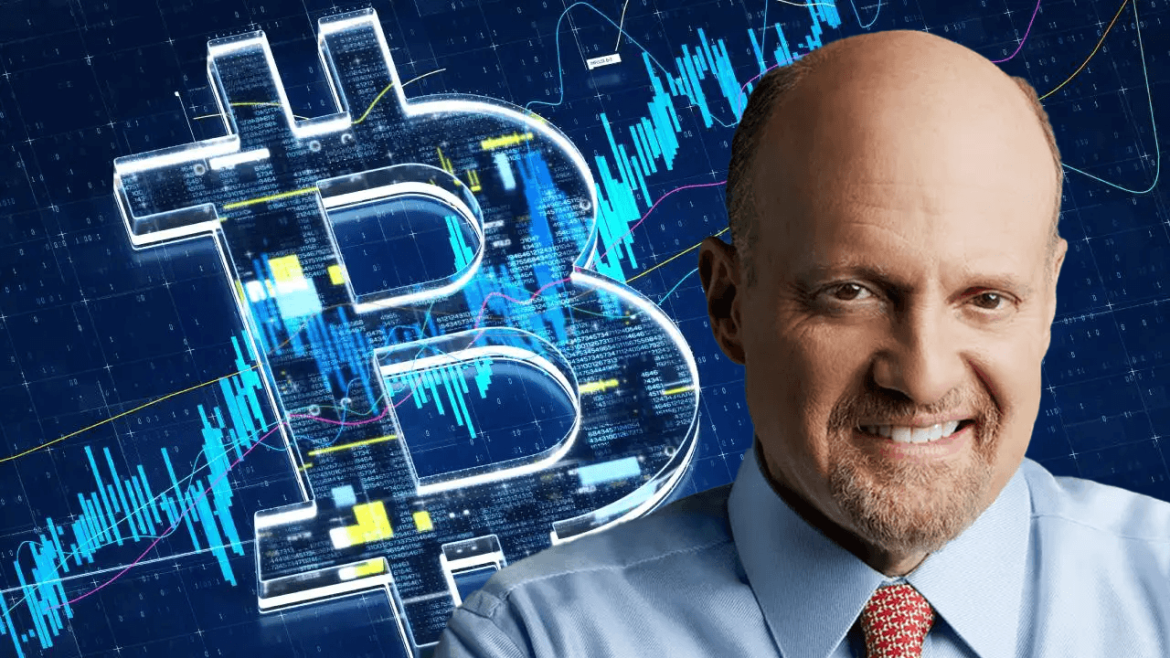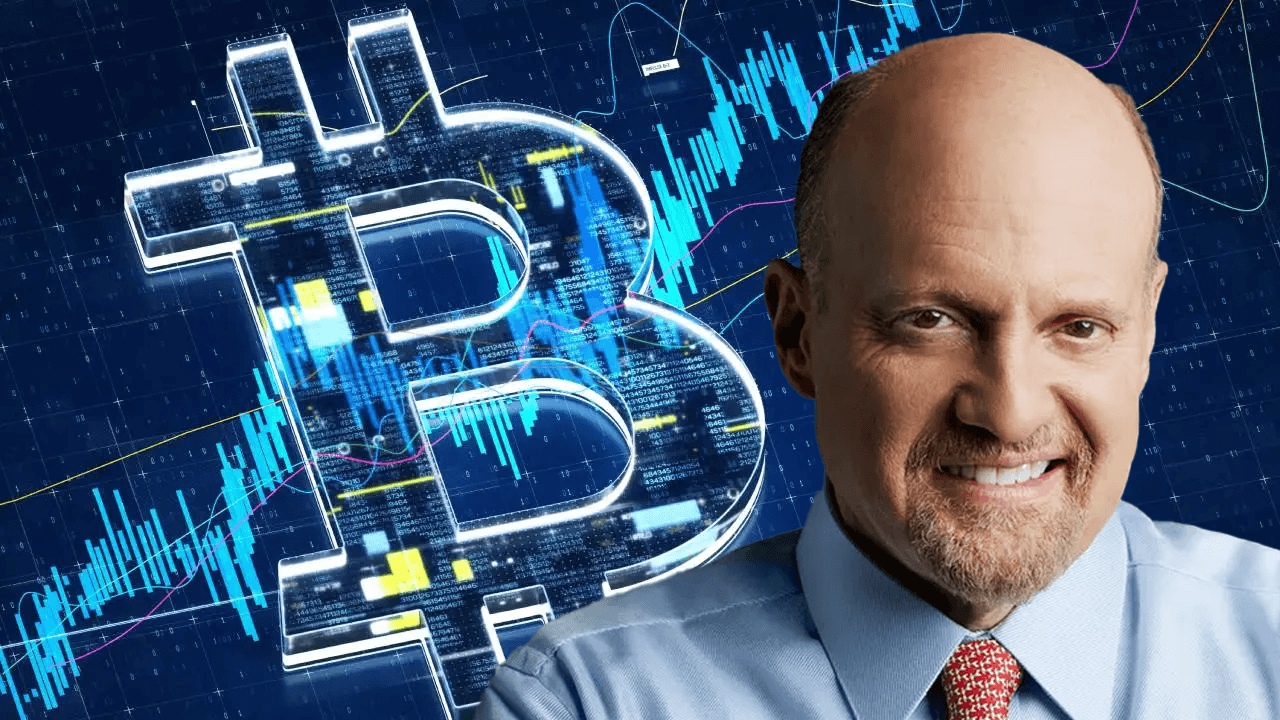Decoding the Dichotomy: An Analysis of Inflation, Housing Prices, and Jim Cramer’s Financial Perspectives
A World of Economic Crosscurrents
The global economy is a complex web of interconnected systems, where shifts in one area can send ripples across the entire financial landscape. In recent years, several key themes have dominated economic discussions: inflation, the soaring housing market, and the rise of cryptocurrencies. These issues are not isolated but are deeply intertwined, influencing each other in ways that can be both predictable and surprising. At the heart of these discussions are financial analysts and commentators, whose insights can guide investors through the complexities of the market. One such prominent figure is Jim Cramer, whose perspectives on these topics offer a unique lens through which to view the current economic climate.
House-Price Inflation: An Unstoppable Force?
The surge in house prices has been one of the most persistent and concerning economic trends of the past decade. The term “house-price inflation” encapsulates the significant upward pressure on housing costs, driven by a confluence of factors. Low interest rates, increased demand—partly fueled by the shift to remote work—supply chain bottlenecks affecting construction, and speculative investment have all contributed to this phenomenon. The skepticism regarding the Federal Reserve’s perception of inflation, as implied in the provided title, suggests that the situation might be more severe than officially acknowledged.
The Drivers of House-Price Inflation
The Challenges Posed by House-Price Inflation
The continuous rise in housing prices presents a multitude of challenges, particularly for first-time homebuyers and low-to-middle-income families. Affordability becomes a significant barrier, as rising prices outpace wage growth, making it increasingly difficult for young people to enter the housing market. This can exacerbate wealth inequality, as homeowners benefit from rising asset values while renters struggle to keep up with increasing costs.
Furthermore, rapid house price inflation can contribute to broader economic instability. Asset bubbles, where prices rise beyond sustainable levels, can lead to market corrections or even crashes. These corrections can have ripple effects throughout the economy, affecting not just the housing market but also related industries like construction, finance, and retail.
Jim Cramer on Bitcoin: A Hedge Against Uncertainty?
Jim Cramer’s perspective on Bitcoin offers a nuanced view of the cryptocurrency’s role in the modern financial landscape. While acknowledging Bitcoin’s potential as a hedge against U.S. debt, Cramer expresses concern about its volatility and speculative nature. This duality reflects the ongoing debate surrounding Bitcoin and other cryptocurrencies, where proponents and critics present compelling arguments on both sides.
The Case for Bitcoin
Proponents of Bitcoin argue that it offers a decentralized and inflation-resistant alternative to traditional currencies. Unlike fiat money, which can be devalued through excessive printing, Bitcoin has a fixed supply cap of 21 million coins, making it a potential hedge against inflation. Additionally, its decentralized nature means it is not subject to the whims of central banks or governments, offering a level of financial sovereignty that is appealing to many investors.
The Case Against Bitcoin
Critics, however, point to Bitcoin’s price volatility, regulatory uncertainties, and potential for illicit activities. The cryptocurrency’s price can swing wildly in short periods, making it a risky investment for those seeking stability. Regulatory uncertainties also pose a challenge, as governments around the world grapple with how to regulate and tax cryptocurrencies. Furthermore, Bitcoin’s association with illicit activities, such as money laundering and dark web transactions, has tarnished its image and raised concerns about its long-term viability.
Cramer’s Generational Perspective
Cramer’s concern about Bitcoin’s volatility, as expressed through his worry for his children, highlights an evolving generational perspective on finance. Younger investors are generally more open to digital assets and are more likely to see the potential benefits of cryptocurrencies. This generational divide underscores the need for continuous education and adaptation in the financial world, as new technologies and investment opportunities emerge.
Cramer’s Wisdom: Self-Reliance and Frugality
Beyond his views on macroeconomic trends and specific investments, Jim Cramer emphasizes the importance of personal financial responsibility. His advice to teach children about money by “not giving them any money” underscores the value of self-reliance and financial independence. This approach encourages individuals to develop a strong work ethic, learn how to manage their own finances, and make informed investment decisions.
The Importance of Financial Independence
Cramer’s emphasis on self-reliance is rooted in the belief that financial independence is a crucial life skill. By encouraging children to earn their own money and manage their finances, parents can instill a sense of responsibility and discipline that will serve them well throughout their lives. This approach also fosters a deeper understanding of the value of money and the importance of saving and investing for the future.
The Power of Frugality
Cramer’s advocacy for frugality further reinforces the importance of prudent financial habits. By prioritizing saving and investing over frivolous spending, individuals can build a strong financial foundation that will support them through economic downturns and unexpected expenses. Cramer’s personal example as a “famously frugal spender,” despite his wealth, highlights the importance of living below one’s means and avoiding unnecessary debt.
Navigating the Economic Jungle
Understanding the intricacies of inflation, housing markets, and cryptocurrencies requires a multifaceted approach. Relying solely on the pronouncements of any single individual, even a seasoned market commentator like Jim Cramer, carries risk. A diversified strategy, combining fundamental analysis, risk management, and awareness of personal financial goals, is crucial.
Understanding Inflation’s Nuances
Inflation is not a monolithic entity; its impact varies across different sectors and income levels. While rising house prices might benefit homeowners, they disproportionately burden renters and prospective buyers. Similarly, rising food and energy costs can have a more significant impact on low-income households. Investors need to understand the specific drivers of inflation in various sectors to make informed decisions. Furthermore, it is vital to monitor not just headline inflation figures but also core inflation, which excludes volatile components like food and energy, to get a clearer picture of underlying price pressures.
Housing Market Realities
The housing market is influenced by a complex interplay of factors, including interest rates, demographic trends, government policies, and local economic conditions. While low interest rates have fueled demand in recent years, rising rates could potentially cool the market. Demographic shifts, such as the increasing number of millennials entering their prime homebuying years, continue to shape demand patterns. Investors need to carefully assess these factors and consider regional variations when making housing-related decisions. Additionally, potential homebuyers should carefully evaluate their financial situation and avoid overextending themselves, even in a seemingly hot market.
Cryptocurrency Caution and Education
Cryptocurrencies present both opportunities and risks. While some investors see Bitcoin as a potential store of value and hedge against inflation, its price volatility and regulatory uncertainties remain significant concerns. Before investing in cryptocurrencies, individuals should thoroughly research the underlying technology, understand the risks involved, and only invest what they can afford to lose. Moreover, the cryptocurrency landscape is constantly evolving, with new projects and technologies emerging regularly. Continuous learning and adaptation are essential for navigating this dynamic market.
The Power of Financial Literacy
Ultimately, the key to navigating the complex economic landscape lies in financial literacy. Understanding basic financial concepts, such as budgeting, saving, investing, and debt management, empowers individuals to make informed decisions and achieve their financial goals. Schools, community organizations, and online resources can play a vital role in promoting financial literacy. Furthermore, individuals should proactively seek out financial education and continuously update their knowledge as the economic environment changes.
Conclusion: Embracing Prudence and Knowledge
In a world characterized by economic uncertainty and rapid change, a balanced approach that combines informed analysis, prudent financial habits, and a commitment to continuous learning is paramount. While insights from figures like Jim Cramer can be valuable, they should be considered alongside a comprehensive understanding of the economic forces at play and individual financial circumstances. By embracing financial literacy and prioritizing self-reliance, individuals can navigate the economic jungle with greater confidence and resilience. The future of finance is not just about following the latest trends or listening to the loudest voices but about making informed, responsible decisions that align with long-term goals and values. In this ever-evolving landscape, knowledge and prudence are the most reliable compasses.





